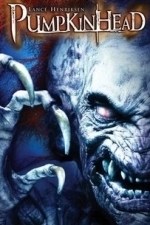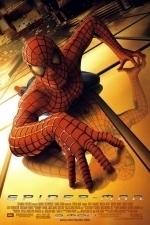Darren (1599 KP) rated Pumpkinhead (1988) in Movies
Oct 24, 2019
Performances – Lance Henriksen is the star of the film, he is easily the best performer as his character goes through the biggest trauma and shows the desperation for revenge and regret for his decision. When it comes to the rest of the cast, they are performed to the level most slasher films reached.
Story – The story here follows a man that will do anything to get vengeance for his son’s death, which sees him summon the evil Pumpkinhead to kill the people that took his son, he soon learns the errors of his choice and must figure out how to stop the killing machine. For a monster creature feature slasher this is a simple story, we don’t get twists, we don’t need much character development as we are more interested in seeing the effects being used. It is nice have a story that remains simple in the horror genre at times too.
Fantasy/Horror – The fantasy elements of this film comes from the figure of Pumpkinhead that gets summoned to do revenge for people that believe they have been wronged, which plays hand in hand with the horror side of the film which is slasher elements which show just how deadly this figure will be.
Settings – The film is set in a small town where we don’t have many people with the ones living their knowing each other and anyone coming from the outside being frowned upon.
Special Effects – The effects are the highlight of the film, Stan Winston was known for his ability to create some of the most memorable creatures in film history and with him directing he brings us another terrifying creation.
Scene of the Movie – The first imagine of Pumpkinhead.
That Moment That Annoyed Me – The teenagers are stupid for how they acted for the accident to happen in the first place.
Final Thoughts – This is a slasher that can be enjoyed by the horror community, it offers everything needed to just let us enjoy ourselves without challenging us like other horrors.
Overall: Simple, effective and fun horror.
Emma @ The Movies (1786 KP) rated Spider-Man (2002) in Movies
Sep 25, 2019
It's the classic story, boy meets spider, spider bites boy, boy gets super-human powers.
Okay, so I'll be serious... Awkward high school student Peter Parker gets bitten by a genetically modified spider while out on a school field trip. It isn't adolescence that's changing him though, it's the spider bite, and his new found spider-like abilities come in handy when he decides to fight evil while wearing spandex, after a tragedy hits his family.
Watching Maguire climb a wall is truly cringe-worthy (the effects were terrible). He has this wide-eyed look of insanity. And when he's trying to shoot web intentionally for the first time I half expect a nerdy friend of his to be standing in the background saying "laaaaaame, I knew you were full of shit, Parker."
Spidey learns a harsh lesson about holding grudges after he lets the armed robber go when he gets stiffed for prize money at the arena. Something you also learn in this film, evidently if someone is bleeding you don't need to apply pressure to a serious wound to try and prolong their life while the ambulance gets there.
We learn many important things from this film... best friends can be arseholes. "Oh you like that girl do you, well guess what, I'm going to date her and let you find out by accident."... Oh, and that people running in terror are oblivious to people ripping open their shirts to reveal a Spider-man costume (although the same is true for Superman and Supergirl sometimes too.)... Mary Jane is an idiot, she doesn't recognise her own friend's voice (maybe because he's dressed in spandex and she was distracted) and she doesn't get the hint that "he was in the neighbourhood."... And Willem Dafoe does evil really, really well.
The effects really are terrible, there's no denying that technology has developed a lot since this film was made, but I always find it really awful watching things that are so obviously generated... that hideous artificial looking outline of the green screening. Speaking of green things, Green Goblin's outfit is reminiscent of an over the top Power Ranger villain.
Between the terrible effects and the overacting, I'm honestly not sure what this film was going for. It had too many "funny" bits to be a serious film, and it had too many "serious" bits to be a funny film. I'm left thinking of Batman Forever as a comparison, the only difference being that BF was just over the top enough to be funny.

Skyflow – Time-lapse shooting like a Pro
Photo & Video and Utilities
App
Skyflow is an incredibly handy and functional tool for photographers who aim for the best quality...

Camera Makeup 360
Beauty, Entertainment and Photo & Video
App
Beauty and fashion magazines shouldn’t have all the fun! Creating beautiful and natural looking...

Layapp Pro – Collage Maker & Photo Editor
Photo & Video and Lifestyle
App
Layapp – is a professional collage maker that allows you to create your own creative photo...

Slow Shutter Cam
Photo & Video and Utilities
App
Slow Shutter Cam brings new life into your device's photo toolbox by letting you capture a variety...

Gravie - Text on Video
Photo & Video and Productivity
App
Gravie is the fast and easy video making app that lets you make amazing videos at your fingertips. ...

BeFunky Pro - Photo Editor and Collage Maker
Photo & Video and Productivity
App
Photo Editor by BeFunky. Anything you want to do to your photo, you can do with BeFunkyPro! With all...

Traktor DJ for iPhone
Music and Entertainment
App
The world’s #1 pro DJ software brings high-impact DJing to iPhone. Touch your tracks and create...


